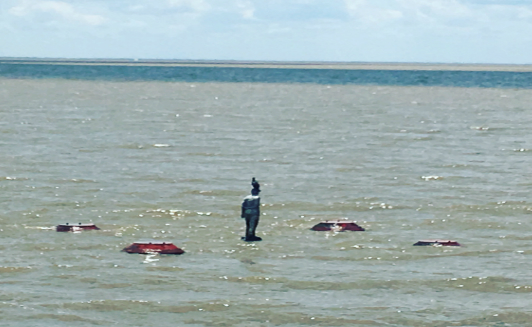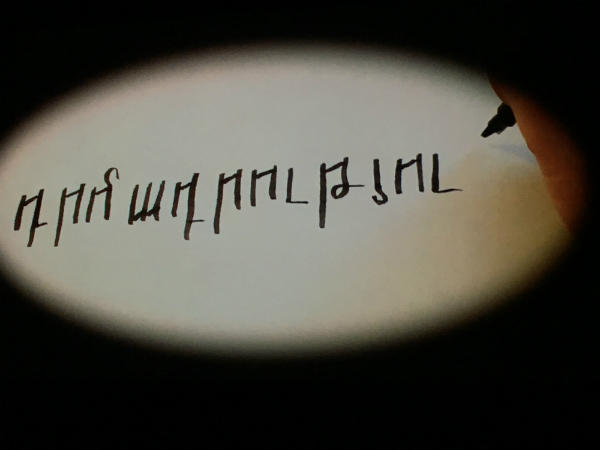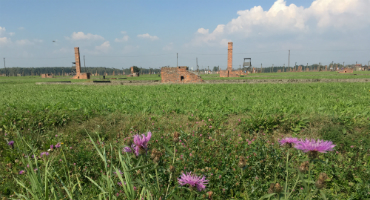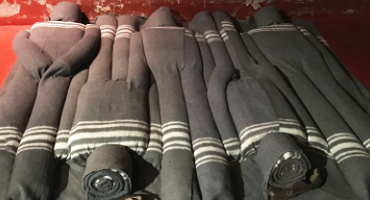Project Coordinator Nayat Karakose visited the sites of memory and museums in Buenos Aires and Santiago in order to observe the practices of dealing with the past through museums and memory sites; to meet with experts and to receive in-depth information about the memorialization work in Argentina and Chile where gross human rights violations occurred including disappearances and extrajudicial killings as a result of the military coup and dictatorships. The study visit started in Buenos Aires on December 5th, within the scope of the Buenos Aires visit, Parque de la Memoria, Espacio Memoria y Derechos Humanos ex Esma, former clandestine detention and torture centers like Olimpo and Orletti memory sites were visited and meetings were held with the experts. During the visit to the sites which used to function as clandestine detention and torture centers such as Orletti and Olimpo, we received information about the dark history of these places and gross human rights violations which occurred in those places. On the other hand we had the chance to explore the memorialization work that is conducted by preserving the space as it is and to learn about the education programs for students.
The visit to the Parque de La Memoria which is located at the waterside of Rio de la Plata, was very inspiring especially for examining the memory work which flourishes from art and takes place in the public space.

The memorial dedicated to Pablo Miguez, who was a 14 year old child when he was disappeared with his mother and most probably killed after being thrown into the Rio de la Plata; the memory plates that are erected all along the riverside with the aim of raising awareness about the human rights violations during the military coup; the memorial designed by artist Nicolás Guagnin, which consists of 25 prisms and which is dedicated to the disappeared father of the artist were powerful examples for representing the memory work which is implemented in the public space in an accessible and visible way.
The former Higher School of Mechanics of the Navy (ESMA) which functioned as a clandestine detention and torture center during the military coup is named as Espacio Memoria y Derechos Humanos today and stands as a site of memory and site of hope. An important section of the site which witnessed gross human rights violations, torture and murders functions as a site of memory that houses powerful exhibitions. The remaining spaces of the whole complex are allocated to a range of organizations and NGOs that work in the field of memory, truth, justice and human rights. Visiting the indoor and outdoor powerful exhibitions and seeing that the buildings are allocated to such organizations was a distinct experience especially to better comprehend how the sites which witnessed the sufferings of the past may have a new meaning and build the hope for the future.

The meetings that were held with Memoria Abierta and the visit to Abuelas de la Plaza de Mayo was inspiring in order to benefit from the experiences of the organizations that work in the field of memory , justice and dealing with the past. Meeting with the representatives of the Armenian organizations in Buenos Aires, having a meeting with the team of Luisa Hairabedyan Foundation, an NGO which conducts exemplary work in the field of memory, justice and truth was worthwhile for exchanging ideas and to explore the future avenues for cooperation.
Santiago Study Visit
In the second leg of the study visit, we visited Santiago and examined the practices of dealing with the past via museums, memorials and sites of memory in Chile , which have a special focus on the military coup and dictatorship of Augusto Pinochet and the gross human rights violations occurred between the years 1973-1990.
The study trip’s first stop was Museo de la Solidaridad Salvador Allende. During the museum visit we had the opportunity to observe the creative narration style, which stands as a remarkable example of the combination of art and memory. We had the chance to see another creative work by the installation of Veronice Troncoso entitled ‘Resisting in Tongues’. We had a meeting with academic Nancy Nicholls Lopendia who also conducts works in the field of memory, owing to the meeting we explored the memorialization work that is being conducted in Chile and also received information about the politic history of Chile. The visit to the Museo de la Memoria y los Derechos Humanos enabled us to receive more information about the human rights violations during the dictatorship, the forced disappearances, torture and extrajudicial killings. The museum which houses a powerful commemoration space for the ones who lost their lives during the dictatorship also has some inspiring exhibitions that are supported by powerful videos, photographs, objects and personal accounts.

Within the scope of the study tour in Santiago, we visited ‘La Chascona’ house museum belonging to the one of the most important personalities of Chile, the world-renowned poet Pablo Neruda. During this visit we observed the way how Neruda’s life was portrayed and also had the chance to learn more about the politic history of Chile from the perspective and lived experience of Pablo Neruda owing to the documentary that was produced and exhibited at the museum. Due to the fact that house-museums represent an important example and one aspect of our site of memory has similar dimensions with house museums, visiting the house museums of artists and authors, benefiting from the experiences on how to narrate a story from the heart of a lived place that was and observing how the visitors are coordinated technically and logistically contributes to our work.
Villa Grimaldi which is one of the most well-known clandestine detention and torture centers of Santiago was another destination during the study visit.
Villa Grimaldi, which is today named as ‘Villa Grimaldi Park for Peace Cooperation’ is a robust site in terms of the remains, exhibitions and the memorials that are designed and dedicated to the victims. 4500 people were detained in Villa Grimaldi and 229 among them were disappeared. The memorialization work that is nourished from the power of place and observing the role of art on the memory work in Villa Grimaldi, sets a precedent in terms of the practices for dealing with the past. Soledad Falabella, a renowned academic in Chile who also produces distinctive work in the field of memory companied the memory tour in Villa Grimaldi and in the neighborhood where Villa Grimaldi is located.
Our last stop in Santiago was Londres 38 which is known as the first clandestine detention and torture center of Santiago. Londres 38 is a site which is almost preserved as it is and all the traces of the past are still very much visible. During our visit we were informed about the history of the site, the gross violations which took place there, the current mission of the site and also how this site was turned into a space of dialogue.
The South America study visit which ended on December 14th was very mind-opening and inspiring for the future endeavors of Hrant Dink Site of Memory and for the steps that we can take in terms of memorialization work. Additionally the visit provided an excellent platform to exchange ideas about the possible avenues of cooperation with a range of organizations.




